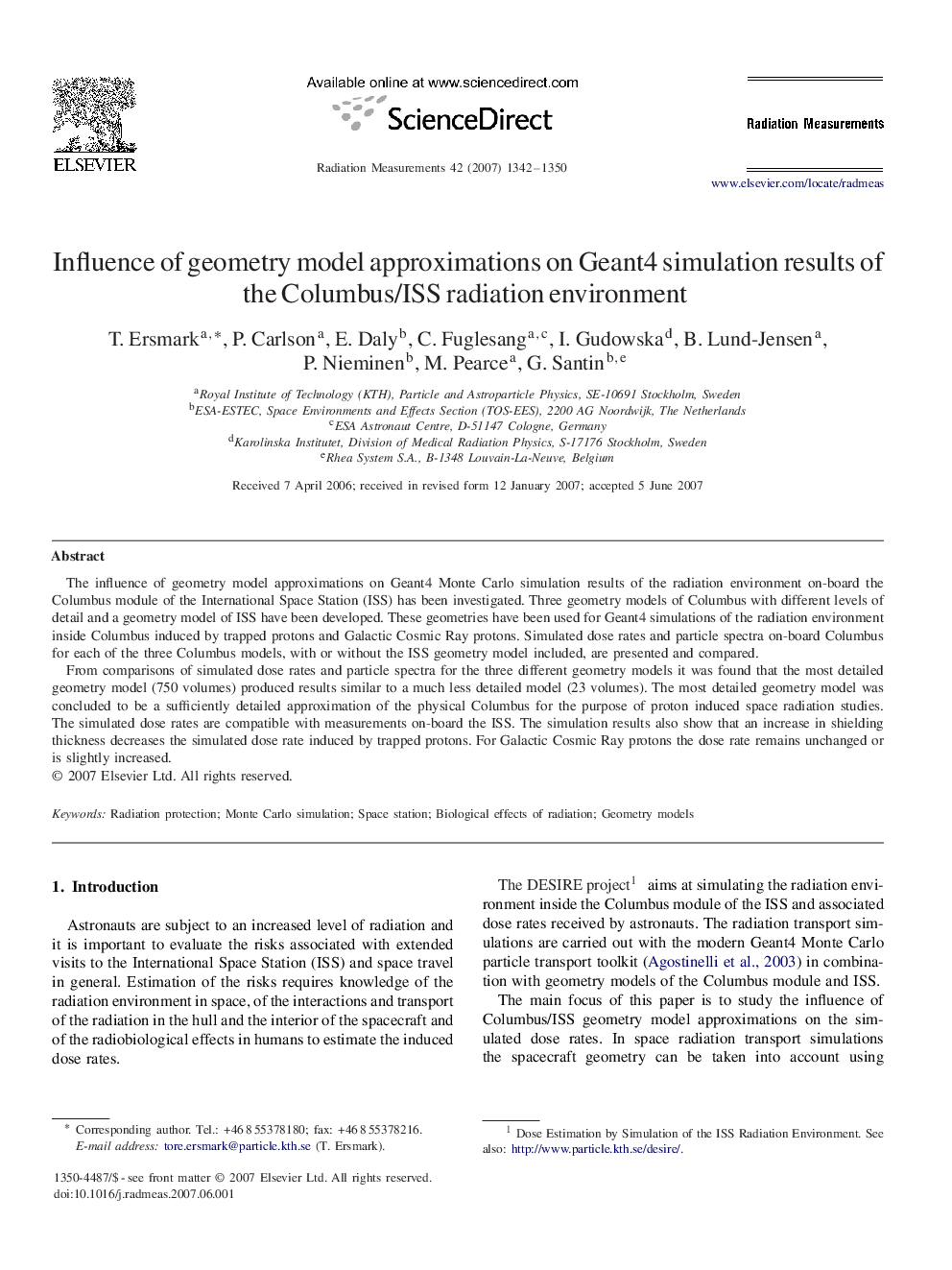| Article ID | Journal | Published Year | Pages | File Type |
|---|---|---|---|---|
| 1882055 | Radiation Measurements | 2007 | 9 Pages |
The influence of geometry model approximations on Geant4 Monte Carlo simulation results of the radiation environment on-board the Columbus module of the International Space Station (ISS) has been investigated. Three geometry models of Columbus with different levels of detail and a geometry model of ISS have been developed. These geometries have been used for Geant4 simulations of the radiation environment inside Columbus induced by trapped protons and Galactic Cosmic Ray protons. Simulated dose rates and particle spectra on-board Columbus for each of the three Columbus models, with or without the ISS geometry model included, are presented and compared.From comparisons of simulated dose rates and particle spectra for the three different geometry models it was found that the most detailed geometry model (750 volumes) produced results similar to a much less detailed model (23 volumes). The most detailed geometry model was concluded to be a sufficiently detailed approximation of the physical Columbus for the purpose of proton induced space radiation studies. The simulated dose rates are compatible with measurements on-board the ISS. The simulation results also show that an increase in shielding thickness decreases the simulated dose rate induced by trapped protons. For Galactic Cosmic Ray protons the dose rate remains unchanged or is slightly increased.
